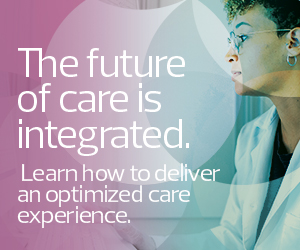Get to the Core of AI
Currently, there are successful AI use cases in automated documentation, medical imaging, clinical decision support, patient monitoring, patient classification, intelligent search and retrieval, data analysis and insights, drug discovery, synthetic patient data, and medical simulation.
But let’s take the mystique out of AI and distill it to its most basic definition: AI is the ability of a machine or software to process and generate information like a human. It involves advanced analytics applied to specialized, well-defined use cases and data when traditional analytics is not enough.
With this understanding, remember that AI is not a magic bullet that will solve all your organization’s problems. There are things that AI can be designed for and applied to extremely well. In other cases, it’s much more time- and cost-efficient to use the tools that you already have.
Evaluating and understanding your current capabilities is an important first step. Know what your current limitations are, from your processes to the skill sets available in-house. Review any cultural limitations you may have. Ultimately, you want the AI solution to be accepted by the users who will interact with it the most. This assessment will help guide your AI journey.
DISCOVER: Healthcare organization leaders put generative AI under the microscope.
Center the Human Experience
As you plan for an AI solution, it’s best to think about the people and processes before evaluating the technology.
If you want buy-in for an AI solution, find a tie-in to an organizational goal. There are many misconceptions about AI, so start with a bit of basic education with your leaders. Then, tie that AI solution to a strategic plan that those very leaders were involved in creating, positioning the solution as an enabler for attaining this goal.
The AI solutions gaining the most traction now, for instance, are related to improving efficiency. If you can streamline your organization’s business operations – such as reducing clinicians’ administrative burdens – that’s going to be a benefit.
Of course, each healthcare organization will have concerns unique to its community. But there are also industrywide concerns that may play a role in your AI journey:
- Staffing shortages
- Clinician satisfaction, specifically concerning burnout: Clinicians are stuck doing rote tasks that prevent them from working at the top of their licenses that end up souring patient-clinician interactions
- Patient satisfaction: Patients want to have meaningful visits with their physicians, and they want to experience a seamless care journey.
- Overall cost containment
READ MORE: Artificial intelligence powers collaboration and efficiency for healthcare.
Another major component in the early planning stages is evaluating how the AI solution fits into your overall data strategy. Healthcare leaders are now taking more interest in data and AI governance. That means you must understand how your organization is managing its data, particularly around trust and risk. Is your data trustworthy? How are you accounting for bias? How are you responding to bad outputs? Is your data secure and are you maintaining privacy constraints? Are you following the latest federal regulations? If there are risks, do you have ways to mitigate them? Try to explain your chosen AI solution as much you as can.
Identify key stakeholders early on and include them in the AI solution selection and planning process. Include solution users, along with representation from legal and compliance teams, to uncover potential risks early in the process. You’ll also need an appropriate user adoption strategy in place to maximize the solution’s use and realize its expected value.
When you are ready to move into the technology evaluation and assess your current infrastructure, make sure to cover your whole ecosystem. When it comes to your networking capabilities, for example, do you have the fastest network speed? How robust is your security? How optimized is your cloud presence? Many new AI solutions are cloud-based, which allows you to sample and test the solutions at a smaller scale.
Additionally, consider platform solutions over point solutions. As your AI capabilities mature, you get the benefit of building on an installed platform that can serve multiple purposes, versus having to select and install yet another targeted solution that does just one thing.
Finally, start with an AI solution that addresses a real problem and can show value early. A solution that solves a problem that no one cares about, or that takes two or more years to prove its merit amid tumultuous financial and workforce concerns, will lose leadership buy-in and stakeholder interest.
AI is not a panacea for all ills, it’s just another tool in your toolbox. Common sense still rules.
This article is part of HealthTech’s MonITor blog series.











